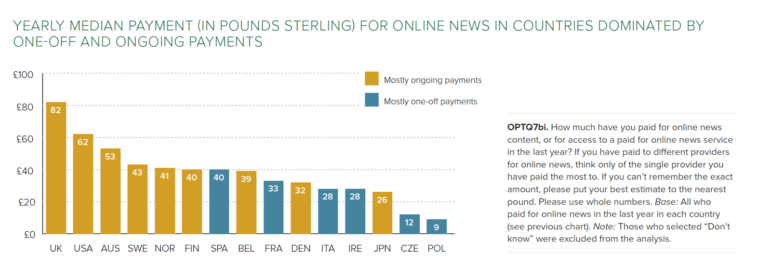

Nonprofit News Model is Fragile
Nonprofits have been touted as a possible alternative to the collapsing business models of for-profit news. But a study released last week by the the Pew Research Center points to the fragility of that model and also to the need for a more concerted effort to shore it up.
The study identified 172 nonprofit news outlets throughout the U.S. – two-thirds of these were launched only since the 2008 financial crisis. While the recession has accelerated the closure of newspapers and the downsizing of news staffs throughout the country, it has given rise to a boom in nonprofit news. Today 41 states have at least one nonprofit news organization.
Nonprofits have attracted a lot of attention partly because of the innovative and high-impact reporting some of them have done. Pro Publica celebrated its fifth birthday this month, with two Pulitzers under its belt and an impressive track record of trailblazing investigative journalism. The Center for Public Integrity and the International Consortium of Investigative Journalists, meanwhile, have been making waves worldwide with the release of a series of stories on offshore secrecy. And last month, the little-known Inside Climate News, a Brooklyn startup with an eight-person staff, was awarded the Pulitzer for its investigation of an oil spill.
So can bad (financial) times be good times for news?
Not in the U.S., which has seen a diminution of newsgathering capacity since the recession began. Nonprofits have picked up some of that slack by producing a range of news – from general interest reports to investigative projects to more focused reporting on topics like environment or education. But the Pew study says that most of these operations are small, with paid, full-time staff consisting of five or fewer people. Most of them, the study says, use unpaid volunteers; nearly a quarter have no paid staff at all.
The nonprofit boom seems to have already plateaued, with 25 new nonprofits being formed in 2010-2012, compared with 46 in 2008-2009. In addition, while three-quarters of the 93 outfits surveyed by Pew had received startup grants of about $100,000, only less than a third had those grants renewed. Most nonprofits rely mainly on foundation funding, although a number earn money from advertising, events and the sale of stories. Most of them, however, do not have the resources to invest in business development. The financial outlook for many of them remains uncertain, although most of the nonprofit news leaders surveyed by Pew were optimistic they would be solvent in five years.
The situation in the U.S. closely mirrors that state of nonprofits elsewhere in the world. A 2013 survey by the Global Investigative Journalism Network’s David Kaplan of nonprofit investigative reporting centers worldwide shows that most have budgets of less than $50,000 and five or fewer people on staff. Like in the U.S., some of these nonprofits wield clout disproportionate to their size, producing or enabling high-quality, high-impact journalism that holds wrongdoers to account.
[module align=”right” width=”half” type=”pull-quote”]Nonprofits have been largely driven by journalists fired up by an editorial or crusading mission, not a business goal. [/module]
The truth is that throughout the world, nonprofit news outfits have been sites for editorial innovation but not – or at least, not yet – for business innovation. Nonprofits have been largely driven by journalists fired up by an editorial or crusading mission, not a business goal. The vast majority are dependent on philanthropic support and would likely not exist without it. If nonprofits are to be models for how independent and deeply reported news is going to be produced in the future, there needs to be much more investment in thinking about – and experimentation with – revenue models.
For sure, many nonprofits are diversifying revenue streams. The New England Center for Investigative Reporting makes a substantial slice of its revenues from training. The Texas Tribune has made money from corporate sponsorships and events; it recently received a $1.5 million-grant from the Knight Foundation to hire business analysts to explore new revenue models, including paid premium content for targeted audiences. The Investigative News Network helps nonprofit news outfits cut costs by pooling services and resources, and is helping its members develop new revenue streams.
The Muckraker, a nonprofit investigative reporting site based in Belfast, is launching this month a quarterly investigative magazine that can be downloaded for £3. The site has a staff of three and calculates that it needs to get 11,000 subscribers in the next five years in order to break even. The magazine will be 100 % reader funded. ProPublica, one of the best-funded investigative reporting centers in the world, has also announced that it will publish a monthly online magazine.
[module align=”right” width=”half” type=”pull-quote”]Nearly 40 percent of the nonprofit leaders surveyed by Pew said they would welcome some form of government subsidy. [/module]
To be fair, even the pros have had a hard time selling serious news. And to their credit, some foundations are now investing in sustainability models for nonprofits. But will these efforts suffice? And should government or public funding for nonprofits be seriously considered? Nearly 40 percent of the nonprofit leaders surveyed by Pew said they would welcome some form of government subsidy. Overseas, state money has funded nonprofits, with agencies like the USAID and the Swedish International Development Cooperation Agency (SIDA) providing support for investigative reporting centers in Eastern Europe and the Middle East.
State funding, like any funding, is not unproblematic. The recent attempt by a committee of the Wisconsin state legislature to evict the Wisconsin Center for Investigative Reporting from its offices at the University of Wisconsin shows that the relationship between government and nonprofit outfits can be fraught with tension. Close to a quarter of nonprofit news centers in the U.S. are hosted by universities, some of them state-funded institutions, so while they do not receive money directly from government, they are vulnerable to pressure from the state.
Pressure comes from different directions and over the years, for-profits have devised models – albeit not always successful – for ensuring independence from press proprietors and advertisers. There’s already been quite a bit of discussion about the ethical issues nonprofits face when dealing with private donors. Money from government raises even more issues, especially in the U.S., where the press has traditionally been fiercely independent from government. Elsewhere, however, some form of public funding for the media has been an accepted norm. The BBC, Al-Jazeera and Agence France-Presse, for example, are all financed by the state. And in the U.S. itself, as the distinguished historian Paul Starr has pointed out:
Although some people may consider support for the press to be inconsistent with our national tradition, the Founding Fathers would have disagreed. Besides guaranteeing freedom of the press in the First Amendment, they used postal policy to subsidize newspapers and promote the circulation of news. As a result of legislation adopted in 1792, newspapers received two distinct subsidies in the early republic: cheap, below-cost rates for sending copies to subscribers and a franking privilege that allowed newspaper editors to exchange copies with one another through the mails at no postal charge. These subsidies encouraged the establishment of newspapers throughout the nation on a decentralized basis, and they created a national news network linking those newspapers together—all without censoring or controlling the content of the news itself.
Maybe it’s time to have a real debate on whether journalism funded by the government can be independent, and if so, what safeguards can be built to insure journalistic autonomy.
 Sheila Coronel is director of the Stabile Center for Investigative Journalism at Columbia University, and is the former executive director of the Philippine Center for Investigative Journalism. This is reprinted from her blog, Watchdog Watcher.
Sheila Coronel is director of the Stabile Center for Investigative Journalism at Columbia University, and is the former executive director of the Philippine Center for Investigative Journalism. This is reprinted from her blog, Watchdog Watcher.









